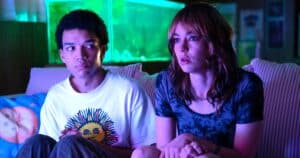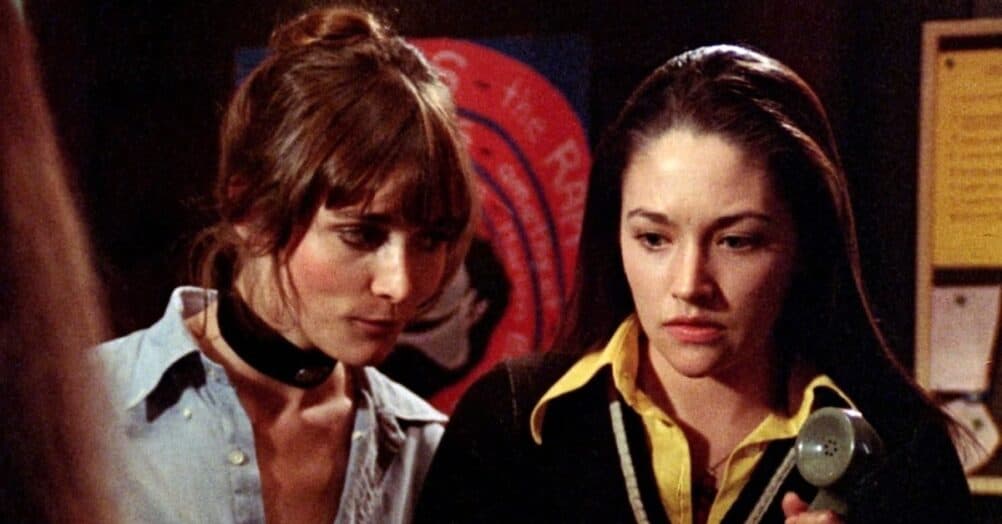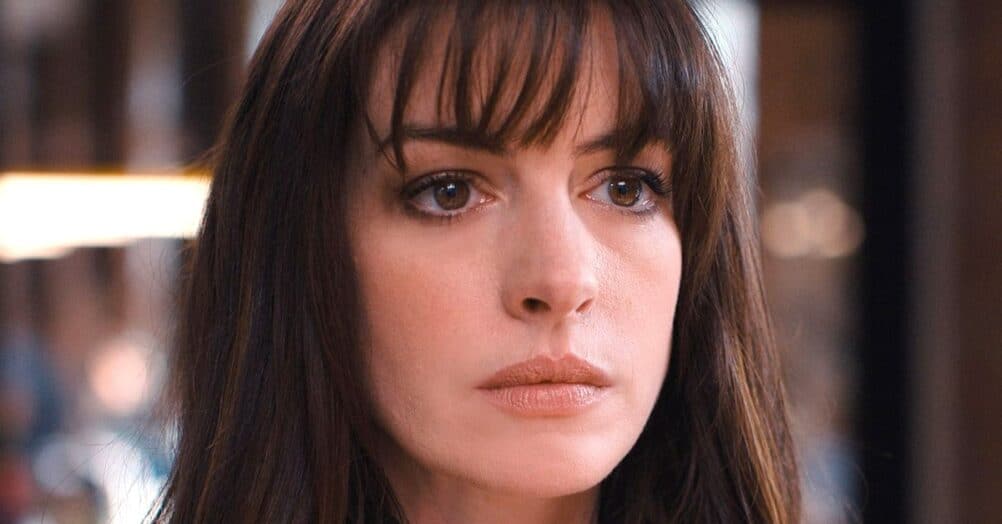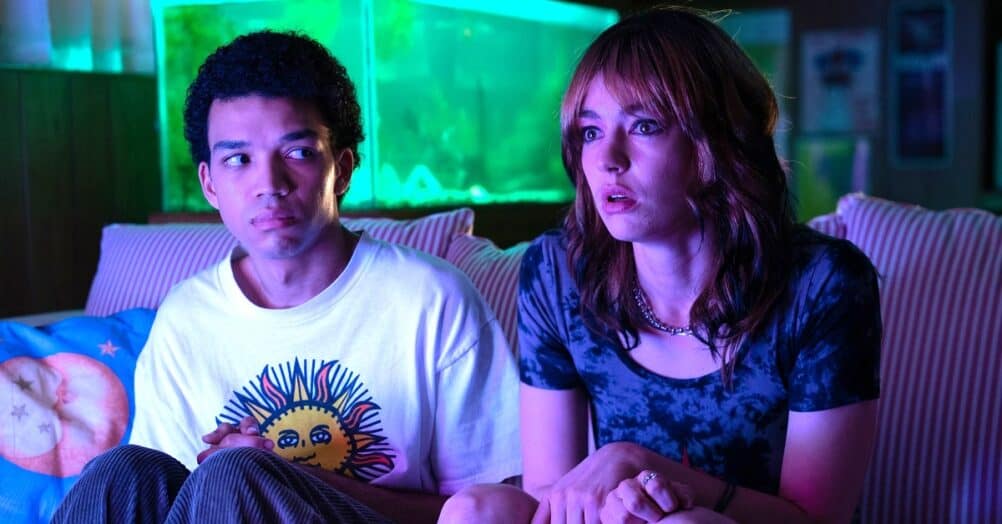Last Updated on October 22, 2024

Is it too cheesy to begin this article with “The future is now”?
That’s the thought I had while sitting behind one of two flat-screen monitors on the set of RESIDENT EVIL: AFTERLIFE in Toronto late last year. Normally, a playback monitor is a small, unimpressive, little t.v.; reminds you of that small TV you used to have in your kitchen. (Well, reminds me of that, anyway.) But not on this movie. On this movie, I was in a separate room, away from the main set, watching the playback on a monitor while wearing 3D glasses, and seeing it all in 3D. No, this isn’t horrible 3D you’re used to watching at home, where it’s blurry and it hurts your eyes. This really was 3D: crisp and clear and protruding from the screen. I could not believe it, and I couldn’t help but think: “When are we gonna start putting these in our homes?” Turns out, not too far from now… This was, of course, before AVATAR was released and blew everyone away; it was also before ESPN, The Discovery Channel, and others announced they were creating their own 3D stations. Back in November 2009, this seemed like “the world of tomorrow” type stuff. Now, in April 2010, it’s almost old news already.
But that’s not the matter at hand. As stated before, I was in Canada hanging out on the set of the new RESIDENT EVIL film, the 4th one in the franchise since it began its cinematic life back in 2002. Making over $100 million worldwide (against a budget reportedly in the $30 million range), it was only natural to continue the series – and each subsequent film has made more than the previous one. Obviously, there’s an audience for this brand name – take into consideration the fact that the last two RESIDENT EVIL flicks enjoyed similar $23 million opening weekends. They are even bigger overseas, particularly in Japan, where the video games were developed by Capcom Co. The company is quite involved with the development on the films, as will be evidenced in the symmetry between this film and the 5th Resident Evil game, released in March.

Needless to say, this product has also made an international star out of Milla Jovovich, who along with her husband Paul W.S. Anderson has been an integral part of the series’ success. Milla’s trademark blend of tender beauty and fierce ass-kicker has made her a modern-day Sigourney Weaver. Anderson – who returns to the RESIDENT EVIL director’s chair after sitting the last two out – has become one of the more productive genre producers working today (if also one of the more controversial, thanks to an often hard-to-please fanboy collective who view the director warily after films like ALIEN VS. PREDATOR and DEATH RACE ).
So how do you keep a franchise fresh after three moderately satisfying entries? I suppose you do what everyone is doing now – you turn to 3D. 3D, you may have heard, is not cheapo, cardboard glasses and lame jump-off-the-screen trick shots anymore – AVATAR‘s stunning success may have put an end to that conjecture once and for all. In fact, AFTERLIFE is utilizing the same technology that James Cameron used on his futuristic blockbuster: The Fusion Camera System, developed by Cameron and Vince Pace. (It will also be showcased in December’s TRON LEGACY). Hence, this isn’t the much-maligned post-production 3D conversion. This is the real deal.
Anderson promises ample use of both positive and negative space. That is to say, he plans on immersing us in his world in an organic way, but we should definitely expect to see things fly off the screen. “I probably won’t be able to contain myself to seven or eight big moments…” Anderson tells us during a break from filming. “We have been very restrained in the use of 3D at certain times. So it’s not always in your face. But then, we definitely have some big 3D moments.”
Using this exciting new technology makes staging the action a bigger challenge than usual, as actor Wentworth Miller points out: “I’m happy to be on this set, learning how to do fight choreography in a new way, because we’re using 3D technology that does not allow you to sell a fake punch; the camera will actually see around the corner, see that you’re not connecting with anything physical, so you have to re-work the way you’re approaching the sequence.”

We’re caught up with behind the camera – what’s going on in front of it this time around? Obviously, I can only tell you what I was privy to, as the producers were still very cagey with divulging their plot. As you probably know by now, returning to action is Claire Redfield, once again played by Ali Larter. “I guess people liked me as her,” Larter says. “I’m excited that they brought me back. I love working with Milla, and it’s also very excited to have Paul back directing this… To work with the man who really created this world and this vision… was what excited me about joining this next installment.”
Redfield’s brother, Chris, is finally introduced in the human form of Wentworth Miller, best known for his role on television’s Prison Break. (For those unfamiliar with the canon, Chris was the main character in the first Resident Evil game, but has never made an appearance in a film until now.) Miller says, “It quickly became evident that there’s a huge Chris Redfield fanbase out there, that’s he’s near and dear to a lot of people, and that there was kind of an appetite for his appearance in the movies…” Miller seems up for the challenge of portraying an iconic video game character, but is also careful to note that it’ll be his Chris Redfield. “All I can do is bring my own specific Chris Redfield to the table. I can’t give you want you want, I can only give you what I do.”
However, Miller is quite grateful to hop on this runaway locomotive. “In certain respects I feel a little like a dinner guest who’s gotten to the dinner party quite late, but that doesn’t mean they haven’t made a nice place for me at the table.”
Larter, speaking about the addition of her fictional brother, says “I think that one of the great things about this movie is they’re bringing in another level of depth and dimension by bringing in this human relationship, this brother-sisterly thing. I think a lot of people are going to relate to that.”

I didn’t get to see Wentworth or Ali kick butt on set. In fact, I didn’t see a whole lot – that I can really tell you about, anyway. I can say that the set we were exposed to was called the “Arcadia Lab”, one of the film’s largest set-pieces. It’s also part of the lair of the villainous “Wesker”, RESIDENT EVIL‘s big bad guy, played this time around by Shawn Roberts. Wesker runs the Umbrella Corporation from a large boat floating off the coast of Alaska, and what we were seeing was Alice’s infiltration on the boat – obviously a sequence in the film’s last act.
The lab is a large white room with dozens of slabs in it (although through the magic of CG, there will likely be hundreds of slabs in the finished product), every slab holding a body – dummies posing as bodies, anyway. There are sheets of glass hanging from the ceiling – in the finished product they’ll be displaying digital readouts of the bodies’ vital signs. The upper part of the wall is a green screen, which naturally will be a giant window in the film, looking out of the gigantic ship… Alice stalks into the Kubrickian room and confronts Wesker face-to-face.
Making things even more hairy for her are the dogs. A part of the RESIDENT EVIL mythology from the beginning, Alice and co. once again have to square off against some nasty pooches – in this case, extremely nasty. “We have what we call a ‘stuffy’ dog,” producer Jeremy Bolt tells us. “The dog’s mouths open up – flower open – with this huge jaw and these huge teeth.” Indeed, we see a fake, stand-in dog looking just like that, its face literally split open revealing a hellish maw. Quite amusingly, Jovovich shoots a scene where she has to stare down a stuffed dog, looking at it for all the world like it’s about to pounce on her. Alas – as most fake dogs often do – it just stands there, not giving much of a performance. (It should be noted that I spotted some real dogs being walked around, possibly awaiting their big moment in front to of the camera, but I never saw them in action.)

Character actor Kim Coates (SKINWALKERS, Sons of Anarchy) is also lurking about. Coates plays “Bennett”, a slimy television producer who winds up being Wesker’s #1 weasel. We watch Coates get kicked around a bit, by a stunt-double of course. Coates’ face, it should be said, looks like it’s about to burst: blue veins cover it, his eyes are bugging out. They’re hesitant to tell us what’s happening to the character, but an educated guess would be that he’s undergoing some bad changes. Turning into a zombie? Something else? Who knows…
Speaking of… what about those zombies? If the dogs are a big part of the RESIDENT EVIL universe, the zombies are – aside from Alice – the most crucial. While we’re not exposed to any zombies on this particular day, we’re told that they are evolving too. In fact, there are completely new breeds of zombies, including “burrowing zombies”, which actually aren’t zombies at all, but infected humans. These are nasty bastards who have been living underground and attempting to burrow through concrete, causing their fingernails and lips to be torn to shreds long ago. I didn’t get a look at these creeps, and the way they were described, that might have been a good thing. I scar mentally with ease.
Stay tuned for full interviews with director Paul W.S. Anderson and star Milla Jovovich later this week!



















Follow the JOBLO MOVIE NETWORK
Follow us on YOUTUBE
Follow ARROW IN THE HEAD
Follow AITH on YOUTUBE